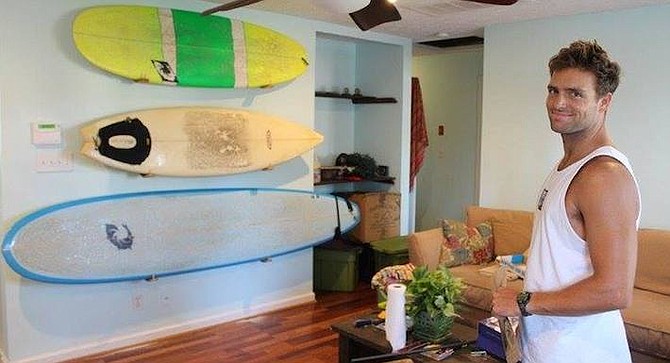 Facebook
Facebook
 X
X
 Instagram
Instagram
 TikTok
TikTok
 Youtube
Youtube

Snorkeling is usually a shallow water endeavor where you see the bottom while you breathe. Freedivers drop to depth, usually to hunt or forage.
To get the best use of time below the surface, freediving requires knowing position and direction in the water. The sun lets one know where the surface is, but currents can confuse and at night, when the foraging can be the best, a headlamp or flashlight won’t help find the surface much.

But there is line diving. Line diving is where you use a weight, line, and float to show the vertical line from the ocean floor to the surface. As Chris Cheezem of DiveViz notes: “Often, the line is marked at different depth increments and helps you to know how deep you are, but more importantly it keeps you going straight up and down so you don't waste energy/oxygen in lateral movement”.

You can use a Secchi Disk to gauge how far you can see. This device is no more than a 30-centimeter white disc on a rope marked in increments and was developed by Italian astronomer Angelo Secchi in 1865. To gauge the visibility, you lower the disc until it goes out of sight, then raise it until you first see it. The average between the incremental markings on the rope gives you the visibility.
This Sunday at La Jolla Shore’s Kellogg Park, a group of freedivers and snorkelers will gather for a line diving, snorkeling, and cookout meetup. Attendees are advised to bring a surfboard, “in case the waves are huge and the diving is really difficult.


Snorkeling is usually a shallow water endeavor where you see the bottom while you breathe. Freedivers drop to depth, usually to hunt or forage.
To get the best use of time below the surface, freediving requires knowing position and direction in the water. The sun lets one know where the surface is, but currents can confuse and at night, when the foraging can be the best, a headlamp or flashlight won’t help find the surface much.

But there is line diving. Line diving is where you use a weight, line, and float to show the vertical line from the ocean floor to the surface. As Chris Cheezem of DiveViz notes: “Often, the line is marked at different depth increments and helps you to know how deep you are, but more importantly it keeps you going straight up and down so you don't waste energy/oxygen in lateral movement”.

You can use a Secchi Disk to gauge how far you can see. This device is no more than a 30-centimeter white disc on a rope marked in increments and was developed by Italian astronomer Angelo Secchi in 1865. To gauge the visibility, you lower the disc until it goes out of sight, then raise it until you first see it. The average between the incremental markings on the rope gives you the visibility.
This Sunday at La Jolla Shore’s Kellogg Park, a group of freedivers and snorkelers will gather for a line diving, snorkeling, and cookout meetup. Attendees are advised to bring a surfboard, “in case the waves are huge and the diving is really difficult.
Comments